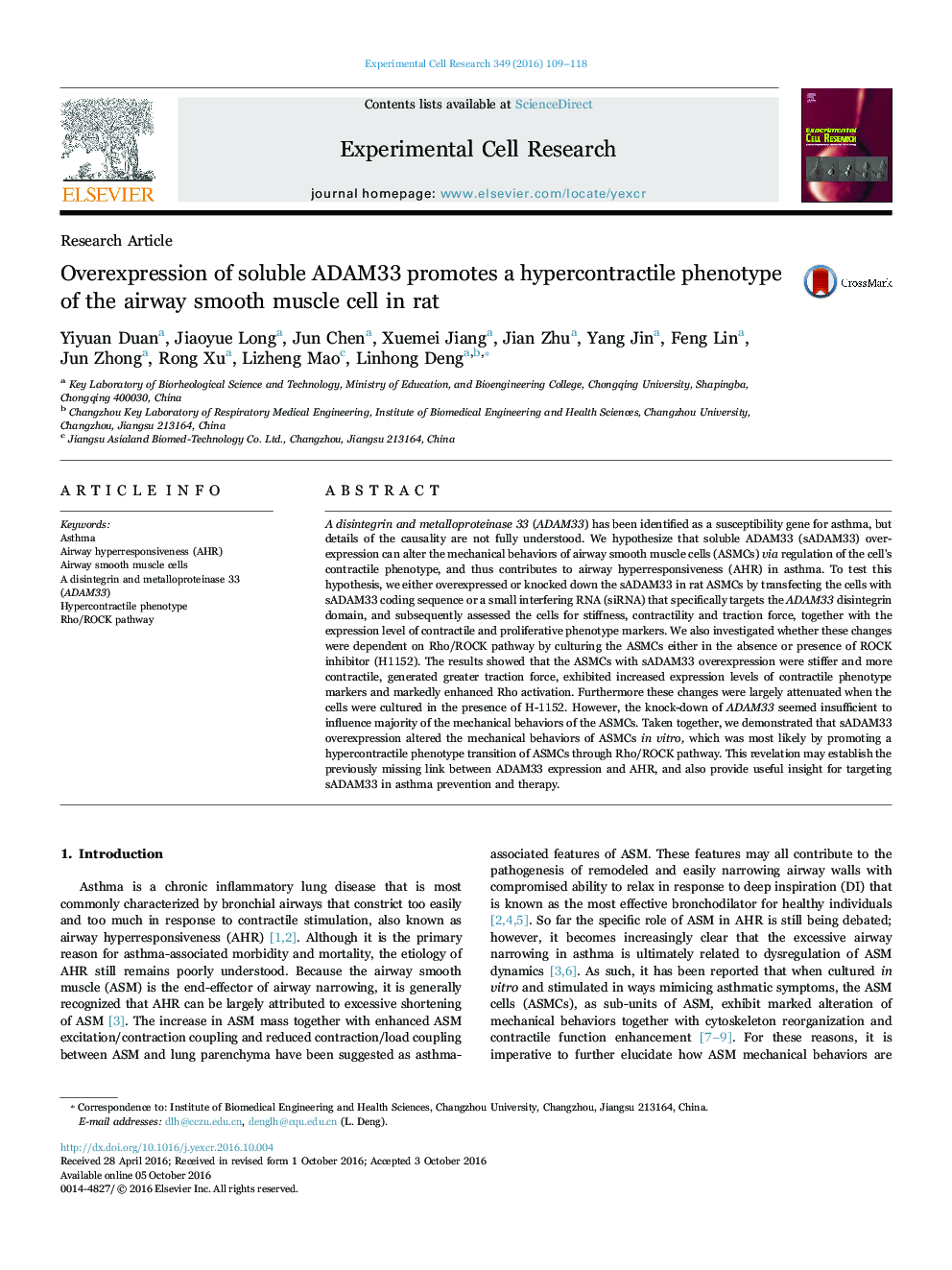| Article ID | Journal | Published Year | Pages | File Type |
|---|---|---|---|---|
| 5527089 | Experimental Cell Research | 2016 | 10 Pages |
â¢sADAM33 overexpression enhances the stiffness, traction force and contractility of ASMCs.â¢sADAM33 overexpression promotes a hypercontractile phenotype of ASMCs.â¢The hypercontractile phenotype transition was largely mediated via Rho/ROCK pathway.â¢ADAM33 knock-down had little effect on the stiffness, traction force and contractility of ASMCs.
A disintegrin and metalloproteinase 33 (ADAM33) has been identified as a susceptibility gene for asthma, but details of the causality are not fully understood. We hypothesize that soluble ADAM33 (sADAM33) overexpression can alter the mechanical behaviors of airway smooth muscle cells (ASMCs) via regulation of the cell's contractile phenotype, and thus contributes to airway hyperresponsiveness (AHR) in asthma. To test this hypothesis, we either overexpressed or knocked down the sADAM33 in rat ASMCs by transfecting the cells with sADAM33 coding sequence or a small interfering RNA (siRNA) that specifically targets the ADAM33 disintegrin domain, and subsequently assessed the cells for stiffness, contractility and traction force, together with the expression level of contractile and proliferative phenotype markers. We also investigated whether these changes were dependent on Rho/ROCK pathway by culturing the ASMCs either in the absence or presence of ROCK inhibitor (H1152). The results showed that the ASMCs with sADAM33 overexpression were stiffer and more contractile, generated greater traction force, exhibited increased expression levels of contractile phenotype markers and markedly enhanced Rho activation. Furthermore these changes were largely attenuated when the cells were cultured in the presence of H-1152. However, the knock-down of ADAM33 seemed insufficient to influence majority of the mechanical behaviors of the ASMCs. Taken together, we demonstrated that sADAM33 overexpression altered the mechanical behaviors of ASMCs in vitro, which was most likely by promoting a hypercontractile phenotype transition of ASMCs through Rho/ROCK pathway. This revelation may establish the previously missing link between ADAM33 expression and AHR, and also provide useful insight for targeting sADAM33 in asthma prevention and therapy.
